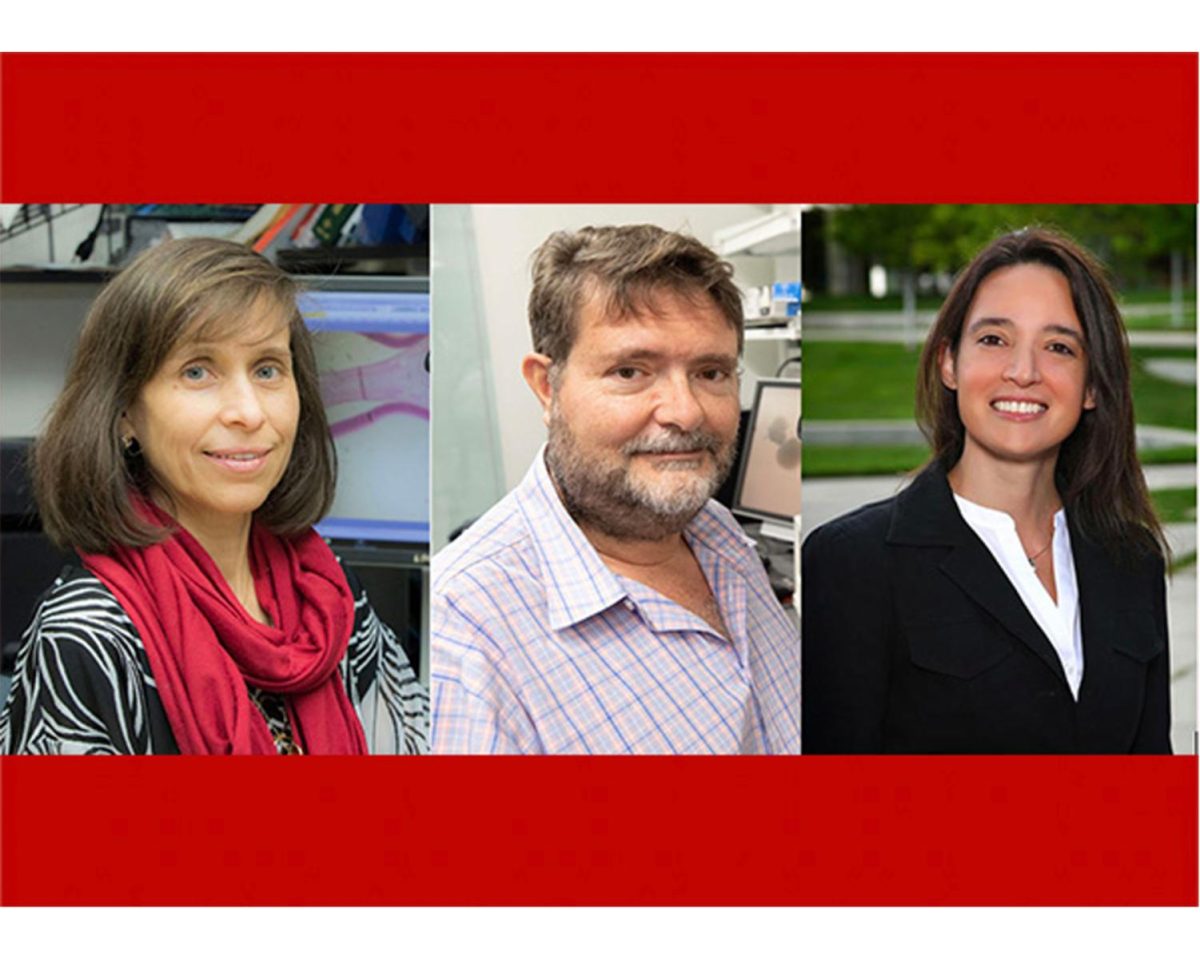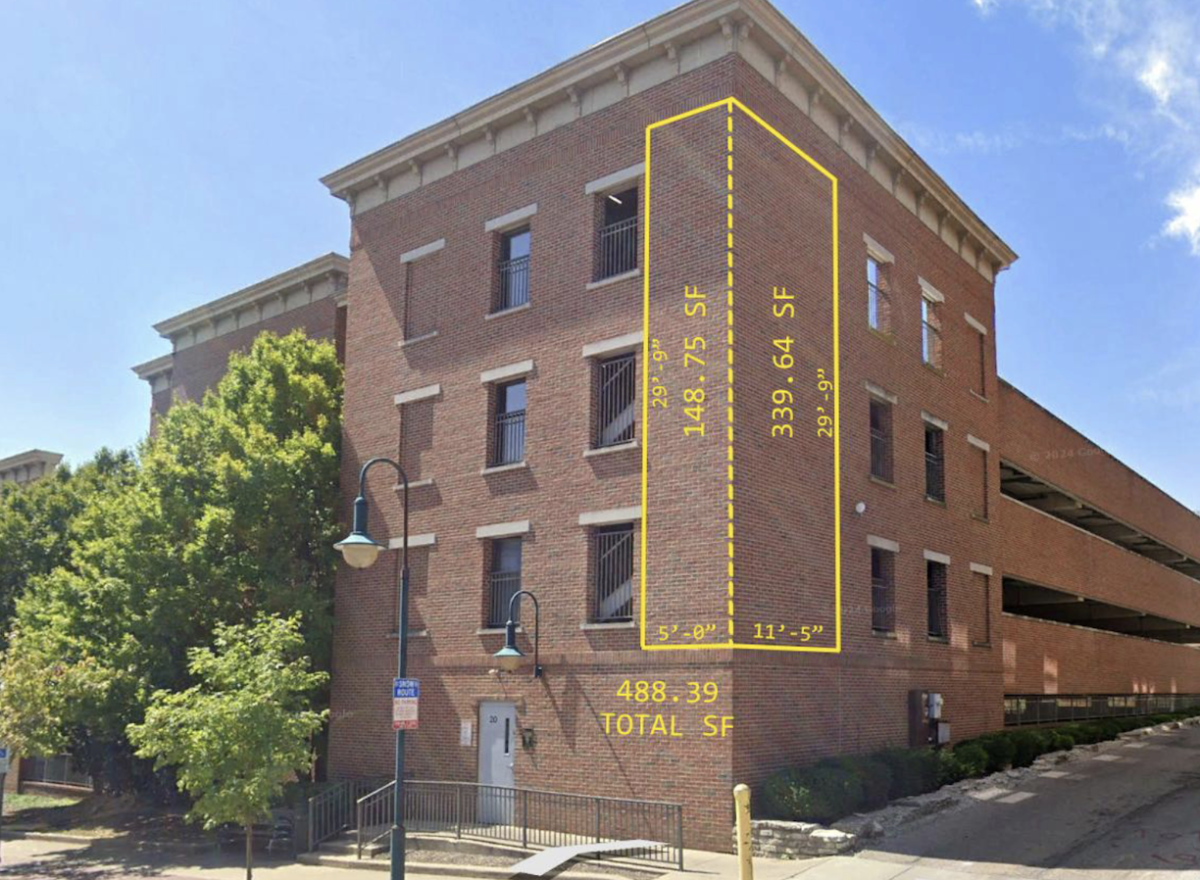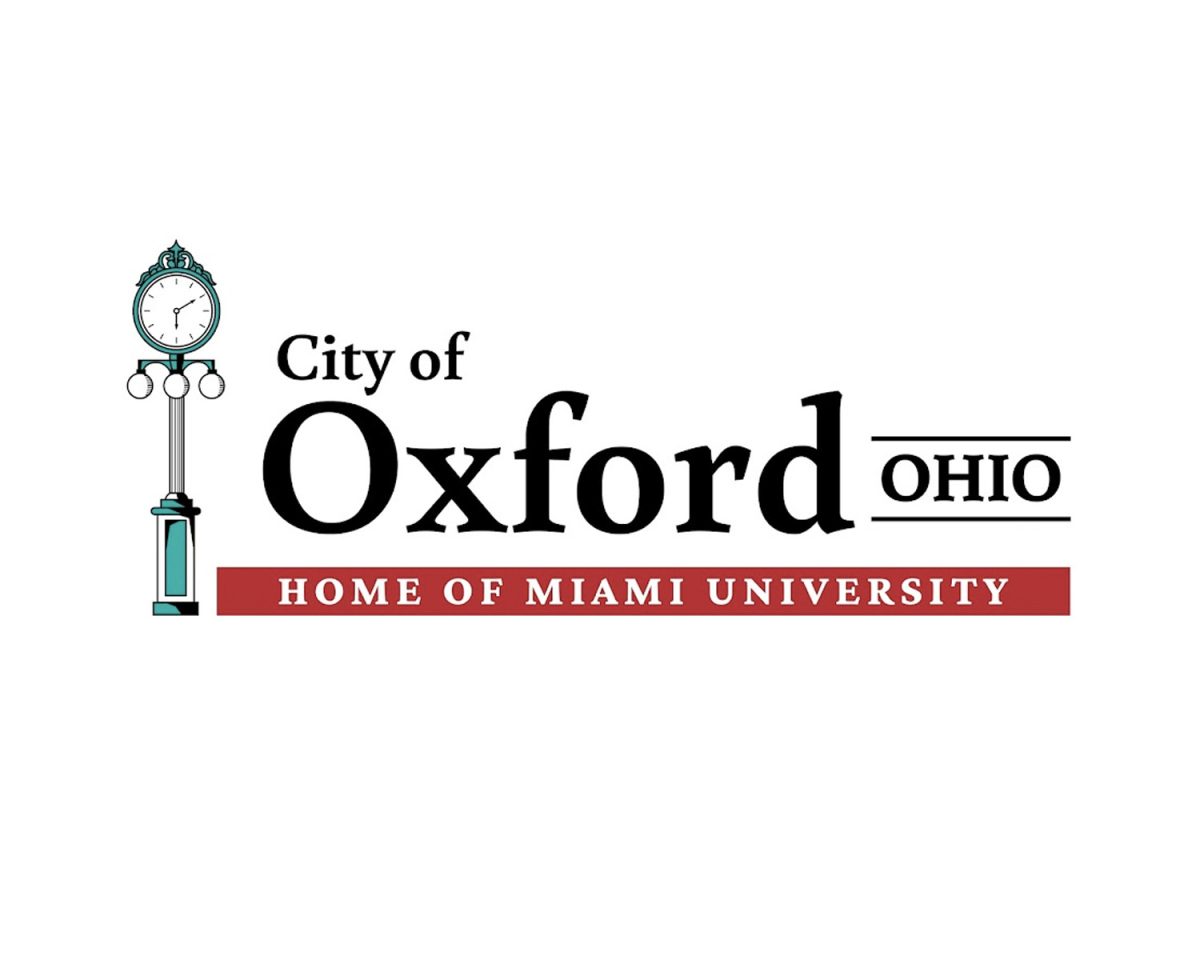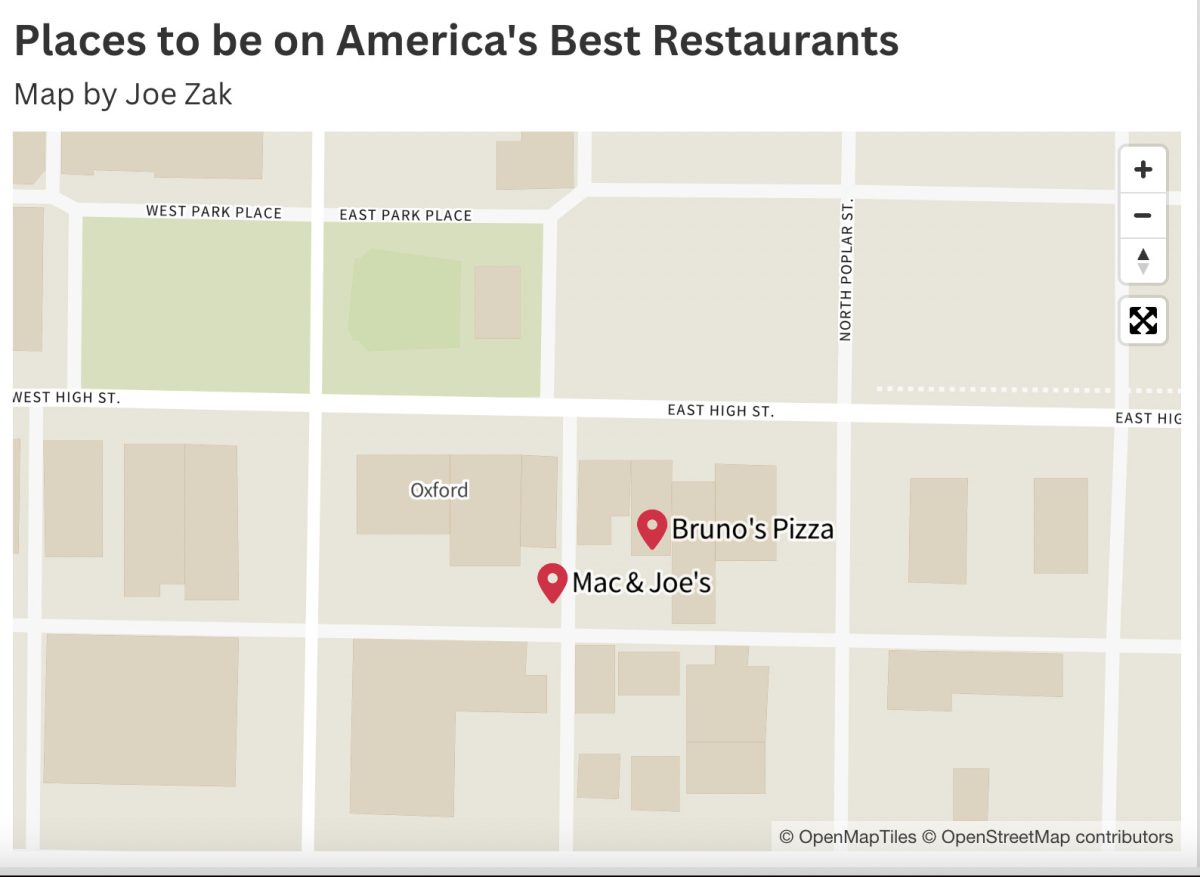Miami biologists receive award for creating artificial retina
From left: Katia Del Rio-Tsonis, Michael Robinson, and Natalia Vergara win second place for creating a model retina in Phase III of the National Eye Institute’s 3D Retinal Organoid Challenge (3D ROC).
September 30, 2022
Three biologists with Miami University ties were part of a team that received second place and $250,000 in a National Eye Institute contest to create an artificial retina.
The team consists of Miami University biologists Katia Del-Rio Tsonis and Michael Robinson, as well as Miami University graduate Natalia Vergara. They constructed a retina organoid similar to the human retina, but grown in a lab from stem cells.
The purpose of the challenge was to create a model retina that contains the complex cellular and neuronal circuitry of the human retina. The model can be used in reproducible and outside-the-body systems, which can serve for research and drug development.
“This challenge was designed to help research teams develop new retina-in-a-dish research models that can be used to accelerate vision research and bring us closer to treatments for eye diseases,” Tom Greenwell, director of NEI’s Office of Regenerative Medicine, said in a press release, “Organoids like those produced by our three winning teams are an exciting new tool in our research toolbox.”
The model produced by the team was recognized for being highly reproducible. This will make it useful for high-throughput drug screening, according to the NEI.
A video with more technical information about the study can be viewed here: https://www.youtube.com/watch?v=pLVS3CmVWBo














